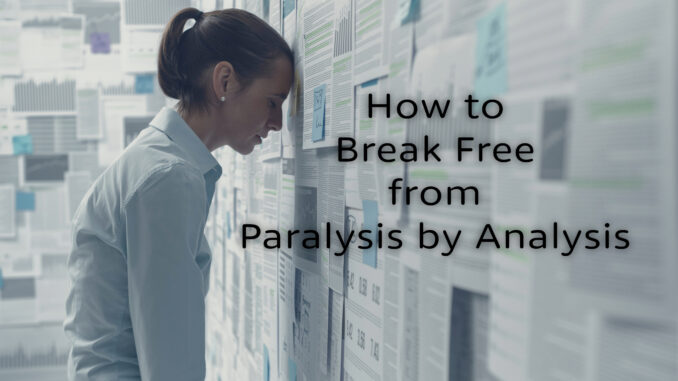
Overanalyzing Instead of Taking Action: How to Break Free from Paralysis by Analysis
In today’s fast-moving business world, making informed decisions is crucial—but overanalyzing every detail can be just as harmful as making rash choices. Paralysis by analysis is a common trap where businesses and leaders get stuck in endless research, meetings, and discussions—without actually taking action.
The result? Missed opportunities, slow growth, and frustration. While due diligence is important, too much deliberation can cripple progress. The key is striking a balance: taking decisive action while managing risk effectively.
How Overanalyzing Slows Business Growth
Missed Opportunities: Markets change fast. Delayed decisions mean competitors move ahead while you’re still debating.
Wasted Time and Resources: Long decision cycles drain energy, create confusion, and slow down execution.
Team Frustration: Employees lose momentum when leadership constantly hesitates, leading to disengagement and inefficiency.
Perfectionism Kills Progress: No decision will ever be 100% risk-free. Overanalyzing leads to stagnation instead of iteration and improvement.
Overanalyzing vs. Taking Decisive Action: A Comparison
| Aspect | Overanalyzing | Decisive Action |
|---|---|---|
| Decision Speed | Slow, delayed by excessive data gathering | Quick, based on key insights and priorities |
| Risk Management | Tries to eliminate all risk before acting | Accepts calculated risks and adapts |
| Innovation | Stagnates due to fear of failure | Encourages experimentation and iteration |
| Employee Morale | Frustration from lack of direction | Motivated by clear goals and execution |
| Market Agility | Lags behind competitors | Responds quickly to trends and changes |
How to Develop a Bias for Action (Without Being Reckless)
Set Clear Decision-Making Criteria Define key factors that actually matter. Instead of getting lost in endless options, create a checklist of must-haves vs. nice-to-haves.
Use the 70% Rule Amazon’s Jeff Bezos follows the 70% Rule: If you have 70% of the information you need, make the call. Waiting for 90-100% certainty often means you’re too late.
Limit Decision-Making Time Set a deadline. Whether it’s a few hours or a few days, force a decision within a set timeframe to prevent endless overthinking.
Test Small, Scale Fast Instead of waiting for the “perfect” strategy, launch a small pilot and adjust based on results. Action beats perfection.
Empower Your Team to Decide Not every decision needs to go up the chain. Delegate authority to employees and trust them to execute. This speeds up business operations and builds accountability.
Real-World Example: How Overthinking Can Lead to Missed Growth
A mid-sized software company spent six months debating the best CRM platform to implement. Leadership held multiple meetings, gathered extensive data, and waited for the “perfect” solution. Meanwhile, their competitors implemented a good-enough CRM and optimized it over time, giving them a head start in customer management and sales tracking. By the time the first company made a decision, they had already lost ground.
Had they followed the 70% Rule, they could have chosen a solution sooner, made adjustments as needed, and gained a competitive edge.
Take Action—Start Winning
Successful businesses don’t wait for the “perfect” time—they make the time perfect by acting decisively. Stop overthinking, start testing, and adjust as you go. The worst decision is no decision.
Where have you seen paralysis by analysis hold businesses back? Let’s discuss in the comments! #Leadership #DecisionMaking #BusinessGrowth #Entrepreneurship
Leave a Reply